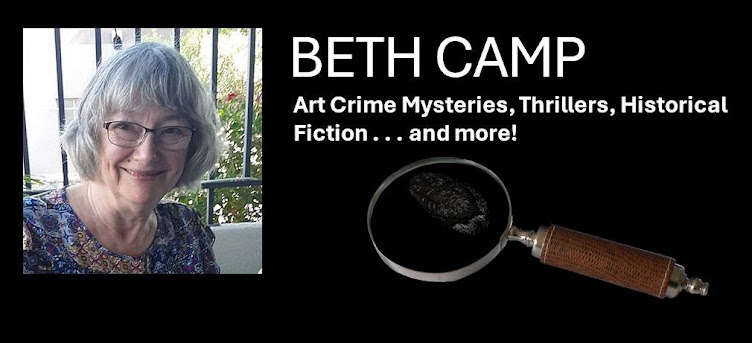Today is a BIG day! I have just a half chapter to fill in a scene, and I'll be done with the first draft of Years of Stone, and ready for my first readers. Just nine months. Originally I thought October. Maybe. Then something happened after happily finishing the A to Z Blogging Challenge in April this year.Maybe it was writing every day. Maybe it was researching 19th Century Tasmanian history (my theme for the A to Z). I made a commitment to write 200 words a day. That would have taken the draft to October. But somehow I cranked out an average of 300 words a day. Presto! The draft is done. OK, nearly done. One scene left.
But today marks the end of June. July will be a key transitional month. I'll be looking at revision, not drafting. Lots of work with the Internet Writing Workshop, bless each and every critter who lives there. And that other dreaded question looms closer: Do I self-pub or continue to seek an agent? Or consider an indie press?
What did I learn from writing this first draft? A few tips to pass along that may be useful to other writers.
TIPS FOR WRITING THE FIRST DRAFT
---Set up a working plan. Doesn't have to be a final outline, but a sketch of where I want to go.Sort of 'who's on first'.
---Work up short descriptions -- a few words -- at the scene level to map out the whole story. Remember doesn't have to be complete. Think main characters, their goals, where they want to be, where they physically and emotionally travel. What obstacles they face.
---Write what I can. Every day.
---Start with characters talking if I don't know where the scene is going. They know.
---Draw maps and update them. This 'grounds' the story and sets physical relationships. (Note: Allen says also think logically! Start from one place and move to another. Ask what's logically first. Not that I was ever THAT logical!)
---Set a promise for a specific word level, say 100 words higher than I think I can do easily. And make it so.
---Keep a daily work journal organized by today's date that tracks word count, any unanswered questions, ideas for scenes, conflicts, events, and, especially for historical novel writing, track those dates!
---If a question arises right in the middle of a writing session, just write it down in the middle of where I am (maybe use ALL CAPS), and keep writing. Don't jump on the internet to fill it in, unless curiosity compells you to do so. You can do that later. Unless, of course, you must.
---If I can't afford Scrivener yet, use the cork board for scene cards set up by chapter and section. Here evaluate themes, characters, conflicts, locations, and seasons.
---Set goals or a working schedule (if goals are too intimidating) for major deadlines (first draft, second draft, first readers, etc).
---Take time to celebrate each accomplishment. Plan to write tomorrow!
Once this last month, really just last week, I dipped under 100 words and was depressed, lost faith, got discouraged. I had made too many commitments that bumped the writing. So, learn a lesson from this! NOTHING BUMPS THE WRITING. OK, almost nothing. Family would bump the writing. But I can reschedule other commitments.
My cork board is clean of 3x5 cards. The next story is already nibbling away.
Beth Camp Historical Fiction
Saturday, June 30, 2012
Saturday, June 16, 2012
Book Cover from Oz . . .
There's something unexpected about researching online. Since it's increasingly unlikely I'll be traveling to Tasmania anytime soon, I've been searching out videos on YouTube and images about key points, Port Arthur, Hobart Town, and the midlands of Tasmania, then trying to imagine what these places must have been like in the mid 1840s -- what plants, what birds, what bugs, what weather, what people. I've found impossibly blue skies and a rich terrain from tropical fern forests, to trackless brush covered mountains, a myriad of small islands, and milder flat plains, ideal for sheep and cattle.
Intrepid photographer, historian, motorcycle buff, antique book lover, and writer Murray Bernard of Tasmania has posted many exquisite photos online. But this picture of Sarah Island seems to capture the essence of my current work in progress, Years of Stone.
 |
| Sarah Island (@ Murray Bernard) |
Perhaps the sharp contrast between the ruined stones of what was once a prison on Sarah Island and the natural beauty of towering eucalyptus draws me. Few letters or books speak to what conditions were like so long ago for those men and women transported to Tasmania, to the land beyond. But should I choose to self-publish in about a year's time, this will be the cover. Thank you, Murray!
Sarah Island, active between 1822-1833, has the reputation of being the harshest penal colony in Van Diemen's Land. I've read somewhere that writers are to 'torture' their characters, but because my story is set in 1842-1844, my characters didn't have to go to Sarah Island. They suffered enough. Here's my other favorite of the view from Port Arthur, also taken by Murray Bernard.
 |
| Port Arthur (@ Murray Bernard) |
Subscribe to:
Comments (Atom)
